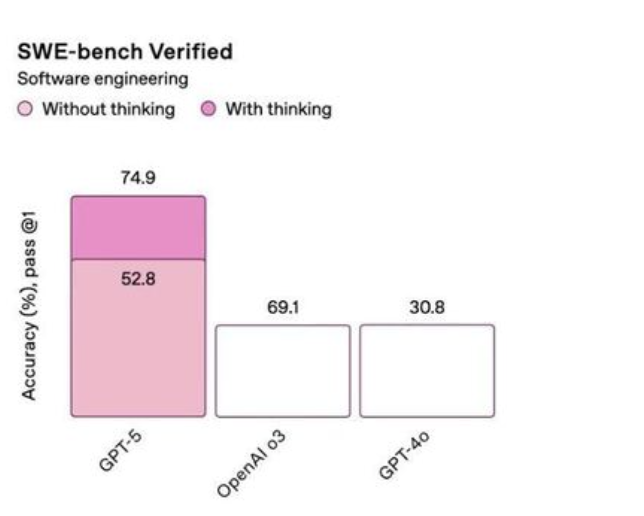GPT-5 is going to kill OpenAI.
August 16, 2025
GPT-5 Won’t Kill OpenAI—Here’s Why the Hot Takes Miss the Point
“GPT-5 is going to kill OpenAI.”
That’s the line floating around right now. Some are panicking, some are celebrating, and a lot of people are just confused. But here’s the thing: that line is wrong. Not just wrong—it completely misses the bigger story.
Let’s break down why the doom-and-gloom takes don’t hold up, why those infamous graphs don’t mean what you think, and why this launch is just another chapter in one of the fastest-growing tech stories of our time.
The Wrong Graphs Don’t Mean a Wrong Future
Yes, the announcement slides weren’t great. Some graphs were mislabeled, scaled incorrectly, or oversimplified to the point of making experts double-take. Critics pounced—bad visuals are an easy target.
But here’s the reality: bad slides don’t equal bad science. Presentations get rushed. Marketing oversimplifies. Mistakes slip through. If we judged every company by their worst keynote graph, Apple, Google, and Microsoft would have been declared dead a dozen times over.

The tech itself—not the charts—matters. And OpenAI is still shipping real, production-ready improvements. The stumble is cosmetic, not catastrophic.
Zooming Out: The Bigger Picture
In less than six years, OpenAI went from obscure research lab to household name. From GPT-2 to GPT-3, we saw leaps that changed how AI research was done. GPT-4 became the benchmark every competitor had to match.
And despite its clunky name, ChatGPT became a cultural phenomenon. It scaled into enterprise products, Microsoft integrations, and custom GPT ecosystems. Fortune 500 companies now use it to power productivity. Governments are even licensing it at scale.
That’s not a company on the brink of collapse—that’s a company maturing.
Innovation Cycles Always Look Messy
Every disruptive company hits turbulence:
- Apple’s “Antennagate” with the iPhone 4.
- Tesla’s production hell.
- Microsoft’s Windows Vista flop.
None of these killed their companies. They were speed bumps. AI is still in its early innings—think 1995 internet era. The hype and backlash come in waves, but long-term compounding growth is what matters.
GPT-5 might not feel “mind-blowing” on day one, but under the hood the improvements in reliability, reasoning, efficiency, and multimodality are fuel for the next decade.
Competition Makes Everyone Better
OpenAI doesn’t operate in a vacuum. Anthropic, Google DeepMind, Meta, and xAI are all pushing hard. Gemini, Claude, and Llama are raising the bar in different ways.
This competition isn’t killing OpenAI—it’s sharpening it. Without rivals, we’d still be stuck with GPT-3.5 Turbo and asking ourselves why we’re bothering. Instead, we now have video generation (Sora), image generation (DALL·E), and better multimodal reasoning across the board.
The ecosystem is growing because the competition is fierce.
Stability Is the Point
If anything, GPT-5’s slower, more measured rollout shows maturity. Instead of racing toward the hype cliff, OpenAI is focusing on stability, accessibility, and enterprise trust.
Features like built-in personas, improved corporate safeguards, free access to top-tier inference models, and developer-friendly APIs aren’t flashy—but they’re sticky. Once businesses integrate GPT into workflows, switching is hard. That’s long-term strategy.
The Real Story
The hot take that “GPT-5 will kill OpenAI” assumes one release defines the company’s future. History says otherwise.
GPT-5 isn’t the end of OpenAI—it’s the beginning of a more mature era. Less hype, more infrastructure. Less “wow me now” and more “we’re here to stay.”
So no, GPT-5 isn’t going to kill OpenAI. If anything, it proves they’re alive, adapting, and still pushing the frontier. The graphs were overblown. The panic is shortsighted.
This isn’t a death knell. It’s just another chapter in one of the most important tech arcs of our lifetime.
What do you think?
Is GPT-5 underwhelming—or the start of “OpenAI 2.0”? Drop me a message on LinkedIn or Twitter.